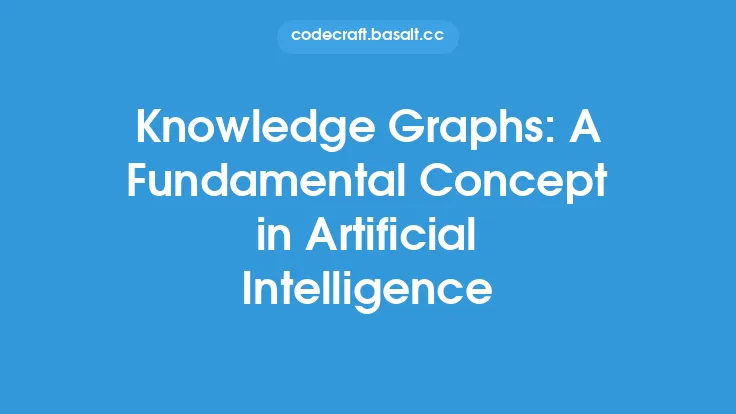The process of transforming raw data into meaningful features is a crucial step in machine learning, as it enables the creation of accurate and reliable models. Raw data, in its original form, is often not suitable for modeling, and requires transformation to extract relevant information. This process, known as feature engineering, involves using domain knowledge and technical expertise to select, transform, and construct new features from existing ones, with the goal of improving model performance and interpretability.
Introduction to Feature Engineering
Feature engineering is a critical component of the machine learning pipeline, as it directly impacts the quality and accuracy of the models developed. The primary objective of feature engineering is to identify the most relevant and informative features that can be used to train a model, while eliminating or transforming those that are redundant, irrelevant, or noisy. This process requires a deep understanding of the problem domain, as well as the ability to analyze and manipulate data using various statistical and computational techniques.
Types of Feature Engineering
There are several types of feature engineering, each with its own strengths and weaknesses. These include:
- Feature selection: This involves selecting a subset of the most relevant features from the original dataset, with the goal of reducing dimensionality and improving model performance.
- Feature construction: This involves creating new features from existing ones, using techniques such as aggregation, transformation, and combination.
- Feature transformation: This involves transforming existing features into new ones, using techniques such as normalization, scaling, and encoding.
Feature Engineering Techniques
There are numerous feature engineering techniques that can be used to transform raw data into meaningful features. Some of the most common techniques include:
- Normalization: This involves scaling numeric features to a common range, usually between 0 and 1, to prevent features with large ranges from dominating the model.
- Encoding: This involves converting categorical features into numeric ones, using techniques such as one-hot encoding, label encoding, and binary encoding.
- Aggregation: This involves combining multiple features into a single one, using techniques such as sum, mean, and median.
- Transformation: This involves applying mathematical functions to existing features, such as logarithmic, exponential, and polynomial transformations.
Feature Engineering for Different Data Types
Different data types require different feature engineering techniques. For example:
- Numeric data: Numeric data can be transformed using techniques such as normalization, scaling, and aggregation.
- Categorical data: Categorical data can be transformed using techniques such as encoding, one-hot encoding, and label encoding.
- Text data: Text data can be transformed using techniques such as tokenization, stemming, and lemmatization.
- Time-series data: Time-series data can be transformed using techniques such as differencing, normalization, and seasonal decomposition.
Evaluating Feature Engineering Techniques
Evaluating the effectiveness of feature engineering techniques is crucial to ensure that the transformed features are meaningful and relevant. Some common evaluation metrics include:
- Correlation analysis: This involves analyzing the correlation between the transformed features and the target variable.
- Mutual information: This involves analyzing the mutual information between the transformed features and the target variable.
- Feature importance: This involves analyzing the importance of each feature in the model, using techniques such as permutation importance and SHAP values.
Best Practices for Feature Engineering
To ensure that feature engineering is done effectively, it is essential to follow best practices such as:
- Domain knowledge: Use domain knowledge to inform feature engineering decisions.
- Data quality: Ensure that the data is of high quality, with minimal missing or noisy values.
- Feature relevance: Ensure that the transformed features are relevant and meaningful.
- Model interpretability: Ensure that the model is interpretable, with features that are easy to understand and explain.
Common Challenges in Feature Engineering
Feature engineering can be challenging, and some common challenges include:
- Data quality issues: Poor data quality can make it difficult to transform raw data into meaningful features.
- Feature dimensionality: High-dimensional feature spaces can be challenging to work with, and require techniques such as feature selection and dimensionality reduction.
- Overfitting: Overfitting can occur when the model is too complex, and requires techniques such as regularization and early stopping.
- Interpretability: Interpreting the results of feature engineering can be challenging, and requires techniques such as feature importance and partial dependence plots.
Future Directions in Feature Engineering
Feature engineering is a rapidly evolving field, with new techniques and methods being developed continuously. Some future directions in feature engineering include:
- Automated feature engineering: Automated feature engineering involves using machine learning algorithms to automate the feature engineering process.
- Deep learning: Deep learning involves using neural networks to learn complex features from raw data.
- Transfer learning: Transfer learning involves using pre-trained models to transfer knowledge from one domain to another.
- Explainable AI: Explainable AI involves using techniques such as feature importance and SHAP values to explain the results of feature engineering.





